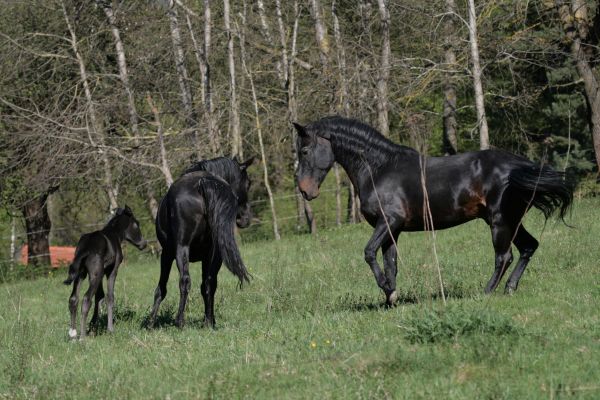The Kabardin horse
The Kabardic cattle-breeding people lived in the North Caucasus, in the new Republic of Kabardino-Balkaria. The Kabardin saddle horse originated in the northern Caucasus. This mountain breed, descended from the primitive Tarpan, already existed in the 15th century. In the early 20th century, after suffering heavy losses during the 1917 Revolution, the breed was saved after infusions of Arabian, Karabakh and Turkmen blood. It has even been used to improve breeds such as the Terek, another Russian horse. There has been some debate over the breed’s name in France (there are only around twenty horses at present). The word Kabardin was brought from who knows where; French literature has always called the people “kabarde” as well as the horses (Voyage au Caucase, Dumas). In Russian, horses (like people) are called “kabardinets” or “kabardinsky”, but the region is also called “kabarda”, even if the name of the republic, a collection of two peoples, is “kabardino-balkaria”. The clear root is “kabard” and the “in” is merely a suffix. As French literature had already decided in our favor, and as it makes more etymological sense, the breeders’ association decided to call this horse “kabarde”.

Caractère et aptitudes du cheval
This docile, obedient horse is vigorous, agile, and surprisingly resilient. Its feet are sure-footed, and its sense of direction is said to be exceptional. Its action is supple and comfortable. Some go amble.
Utilisations du cheval
This saddle horse, ideal for mountainous terrain, is used for light draught, pack, and carriage work, and is also suitable for equestrian sports. Crossbred with the Thoroughbred, then called Anglo-Kabardin, it makes a very good racehorse.
Morphologie du cheval
Rather long head. Straight or convex profile. Slightly pronounced gauntlets. Open nostrils. Long ears with tips turned inwards. Small eyes. Powerful, medium-length body. Rather long, muscular neck. Prominent withers. Rather straight shoulders. Deep chest. Straight, short back. Short, powerful loins. Sloping croup. Limbs rather short, lean, solid. Good bone structure. Joints dry. Very hard hooves. Tail set low. Coat: bay, dark bay or black, gray. Chestnut and gray more rarely. Height: 1.45 m to 1.60 m.


